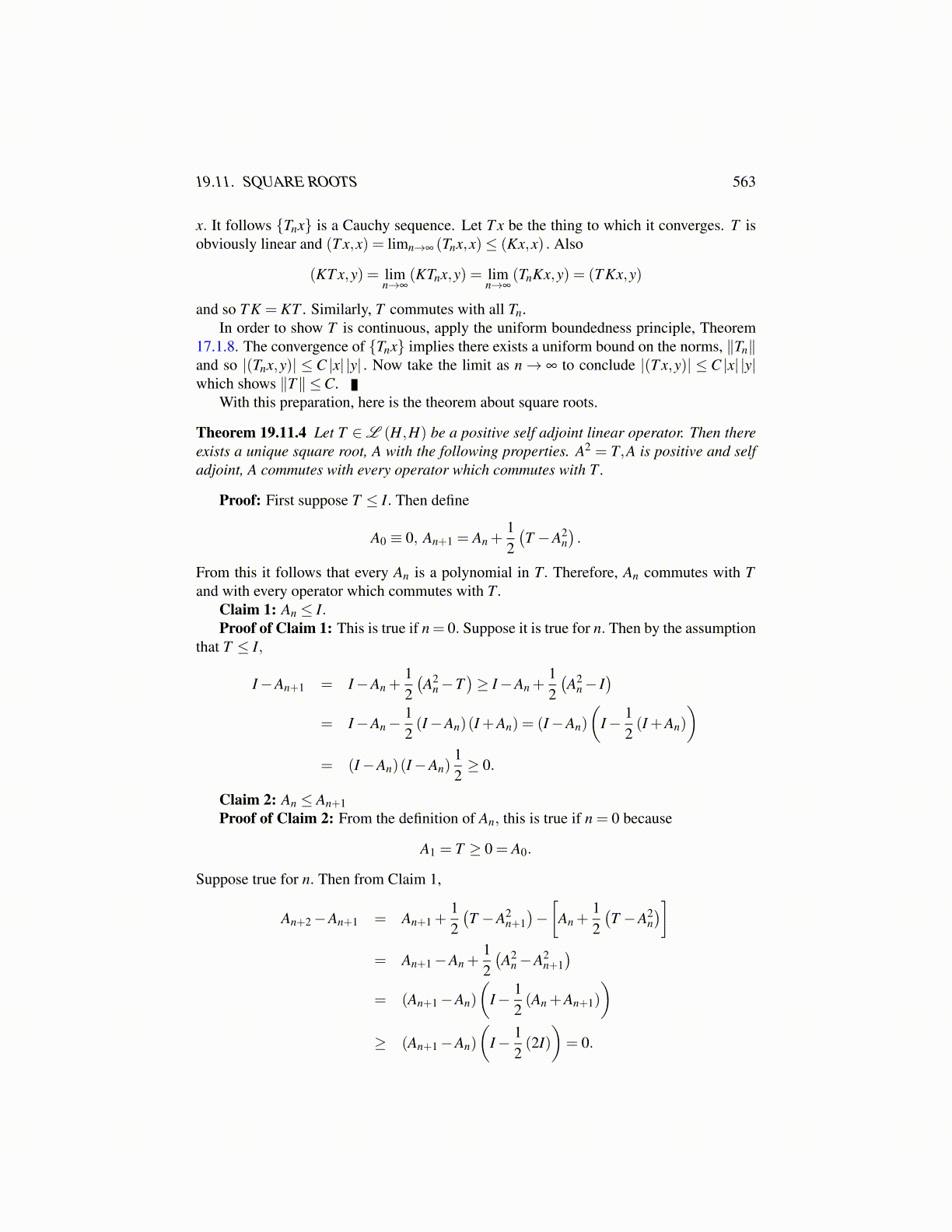
19.11. SQUARE ROOTS 563
x. It follows {Tnx} is a Cauchy sequence. Let T x be the thing to which it converges. T isobviously linear and (T x,x) = limn→∞ (Tnx,x)≤ (Kx,x) . Also
(KT x,y) = limn→∞
(KTnx,y) = limn→∞
(TnKx,y) = (T Kx,y)
and so T K = KT . Similarly, T commutes with all Tn.In order to show T is continuous, apply the uniform boundedness principle, Theorem
17.1.8. The convergence of {Tnx} implies there exists a uniform bound on the norms, ∥Tn∥and so |(Tnx,y)| ≤ C |x| |y| . Now take the limit as n→ ∞ to conclude |(T x,y)| ≤ C |x| |y|which shows ∥T∥ ≤C.
With this preparation, here is the theorem about square roots.
Theorem 19.11.4 Let T ∈L (H,H) be a positive self adjoint linear operator. Then thereexists a unique square root, A with the following properties. A2 = T,A is positive and selfadjoint, A commutes with every operator which commutes with T .
Proof: First suppose T ≤ I. Then define
A0 ≡ 0, An+1 = An +12(T −A2
n).
From this it follows that every An is a polynomial in T. Therefore, An commutes with Tand with every operator which commutes with T.
Claim 1: An ≤ I.Proof of Claim 1: This is true if n = 0. Suppose it is true for n. Then by the assumption
that T ≤ I,
I−An+1 = I−An +12(A2
n−T)≥ I−An +
12(A2
n− I)
= I−An−12(I−An)(I +An) = (I−An)
(I− 1
2(I +An)
)= (I−An)(I−An)
12≥ 0.
Claim 2: An ≤ An+1Proof of Claim 2: From the definition of An, this is true if n = 0 because
A1 = T ≥ 0 = A0.
Suppose true for n. Then from Claim 1,
An+2−An+1 = An+1 +12(T −A2
n+1)−[
An +12(T −A2
n)]
= An+1−An +12(A2
n−A2n+1)
= (An+1−An)
(I− 1
2(An +An+1)
)≥ (An+1−An)
(I− 1
2(2I)
)= 0.